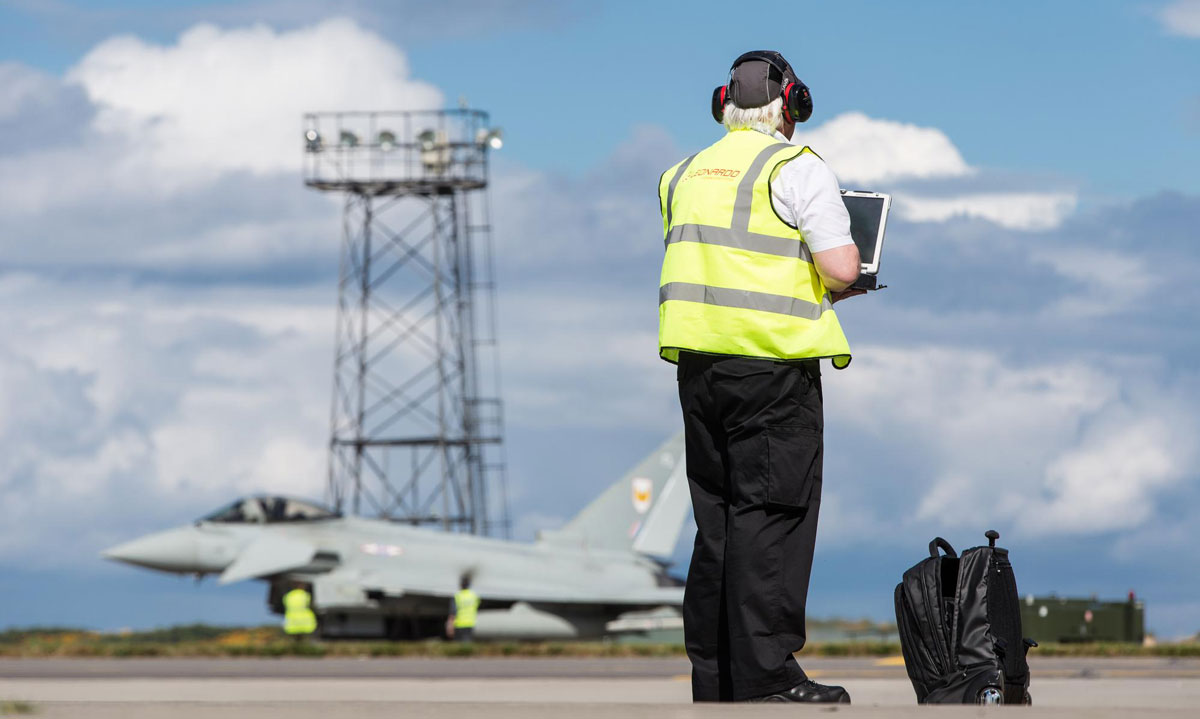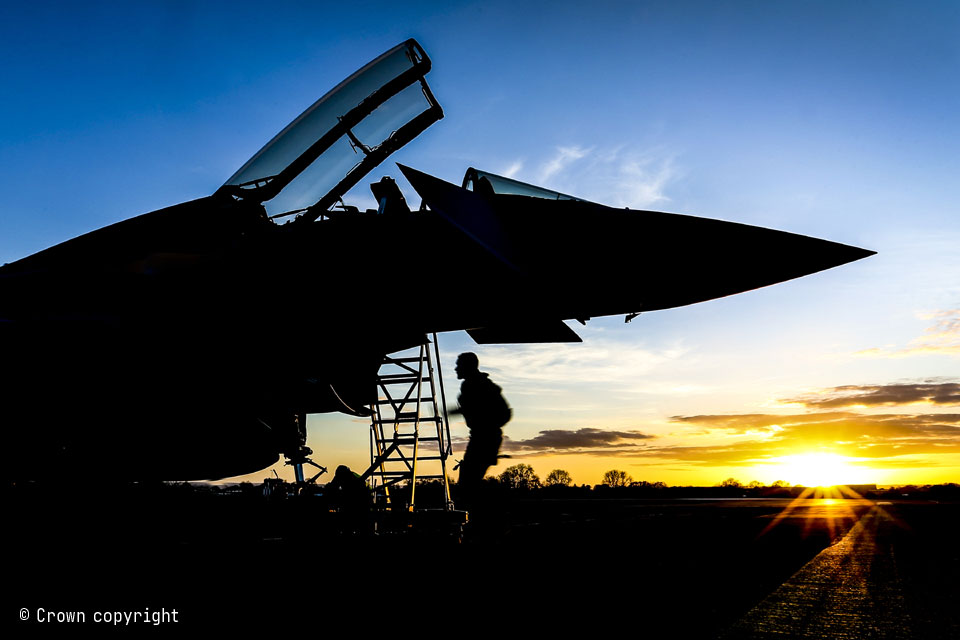The Eurofighter Typhoon is a multi-role fighter that currently forms the backbone of nine air forces across Europe and the Middle East. Its agility and combat manoeuvring ability makes it a force multiplier, facilitated by an advanced avionics suite that sets it apart from other combat aircraft of its kind.
Its multi-role function means that it is heavily utilised in many operational scenarios, so ensuring it is mission ready is vital to success, and effective support processes are needed to ensure this readiness.
The JAS support that Leonardo delivers for the UK falls under the wider Typhoon Total Availability eNterprise (TyTAN) support programme for the aircraft that is led by BAE Systems alongside the Royal Air Force (RAF) and Defence Equipment and Support (DE&S). This 10-year initiative signed in 2016 has improved Typhoon availability while simultaneously reducing the operating costs for the RAF Coningsby- and RAF Lossiemouth-based fleets by more than a third, savings that have been reinvested into the capabilities of the fleet.

Under JAS, Leonardo, BAE Systems and the RAF work in partnership to deliver supply chain and repair management for all avionics on-board, including the defensive aids suite, fire control radar and navigation systems that Leonardo leads the delivery of.
“We deliver this as a service to ensure that Typhoon flies and can engage the enemy whenever it’s needed to,” said Jan Boyes, Vice President Sales, CS3.
“The key to Typhoon operations is the support model that underpins it all, which is applicable to all of our support programmes. The modelling that sits behind every support solution predicts how the aircraft will be used and the avionics on-board, but also how we forecast the demand for spares and repairs as well as the provisioning of technicians and field service representatives to ensure the aircraft are able to execute every mission and sortie.”
This is a truly successful programme that provides real savings to the RAF and its partners, and it is Leonardo’s understanding of the aircraft and its mission that makes it a valuable partner to both the customer and industry partners in supporting this vital asset.
Next-level support
An understanding of complex electronics and the support required is key to delivering support for an aircraft with such an advanced avionics suite, which Leonardo has in abundance.
The company has experience in not just delivering complex electronics solutions for the air, land and sea domains, but also in delivering complex programmes.
Via JAS, Leonardo anticipates the prognostics for the aircraft, diagnosing when something might fail and pre-emptively putting measures in place to rectify this before it becomes a problem.
This means that by the time an aircraft has landed, the equipment, technicians and engineers are in place to make sure the problem is fixed and the aircraft is flying again as soon as possible.
Currently, this relies on human input from pilots and technicians involved in the operation of the aircraft, but in the future, this will be automated so that prognostics are made with little human input.
This is part of a significant investment being made by Leonardo into the digitisation of its customer support offerings, which will digitise processes to pre-empt and understand failures.
“Our digital and data service investment enables all equipment, people and in effect the supply chain to have everything forward loaded, ready to affect the repairs to the platform and keep it flying,” Boyes added.
Artificial intelligence (AI) will be utilised more in the future to provide a predictive element to repair, supply chain and stock management, and will be able to identify when these need to be ramped up. In the event of conflict, for example, AI would be used to determine changes in stock levels and ensure that assets are ready to fight.

In-country support
While the UK leads much of the development of Typhoon alongside the other partner nations, export customers are pioneering the next phase of the Eurofighter programme, and in-country support of their fleets will be essential as their capabilities grow.
Nations including Kuwait, Oman, Qatar and Saudi Arabia all operate the aircraft, and there is a desire for more in-country support to be localised so that these operators do not need to rely so heavily on UK support.
Leonardo’s investment in digitisation and technology will also come into play here, as virtual reality (VR) is introduced to provide remote digital reach back support to in-country technicians. The use of VR is already proving itself in training, and this digital reach back approach to maintenance would provide time and cost efficiencies.
The ultimate aim of this localisation would be to train in-country technicians to provide a sovereign capability, transferring the technology and know-how so that the nations have control over their assets.
This will involve replicating the support model that is already being delivered by Leonardo and its partners, and supply chain management will be crucial to achieving this. Leonardo has a vast amount of experience in managing complex supply chains, and work is underway to identify how this can be seamlessly transferred to an export customer.
Conclusion
The JAS programme is proving to be a success for Leonardo and its partners, but this high-end support approach is not exclusive to UK Typhoon. Leonardo delivers the same support for all of the projects that it leads on, and it can be modelled and scaled to suit any customer or system.
“For soldiers, sailors and aviators to be able to execute their job, we need them focused on it and to never have to think about the services we provide. A good service is something that you never think about as it never fails!” Boyes explained. “We ensure that they always have the equipment and platforms ready to fight the fight. That is what we do, and that is what we enable.”
He adds that those at Leonardo are problem solvers, and that is what engineering companies do – they solve problems.
“Whether it’s an aircraft, a rifle or a vehicle, we aim to add value, so that when that person picks up or steps onto a piece of equipment, it’s working,” said Boyes. “In everything we develop now, no matter what the problem is, we’ll always find a solution.”

